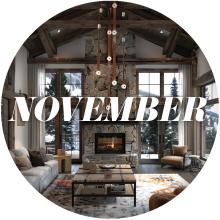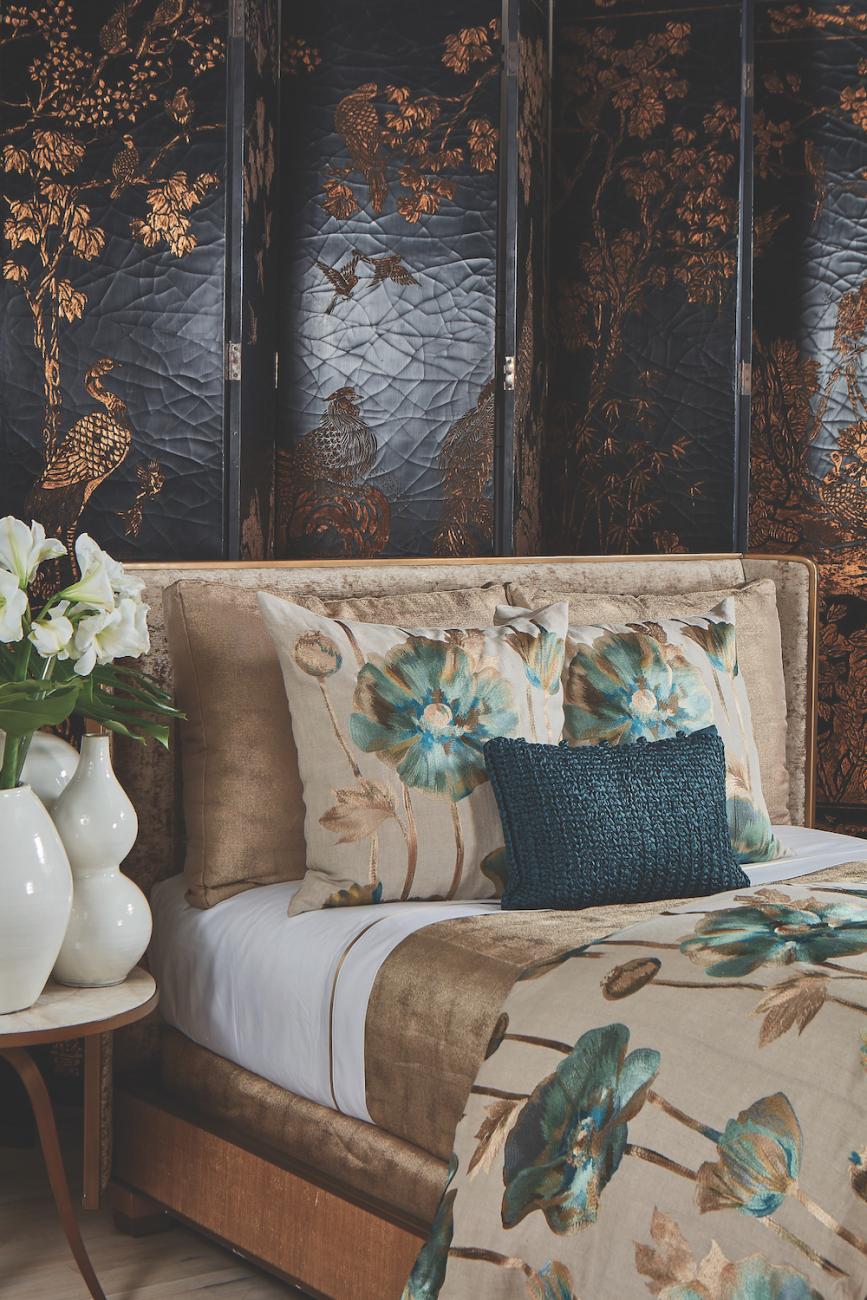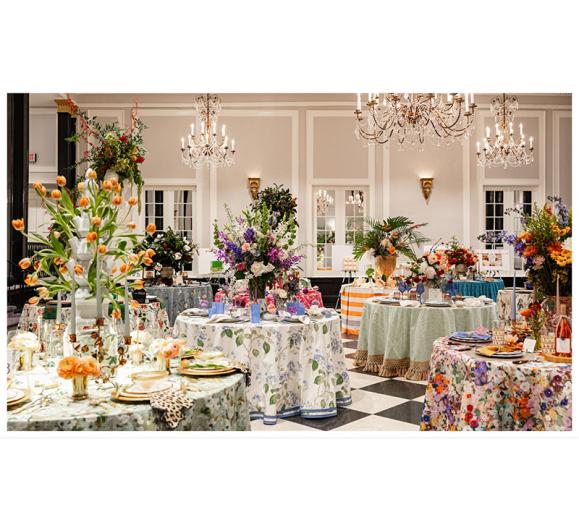In today’s more casual environment, where jeans often replace suits, and consumers, particularly younger generations, are looking for a less formal and more comfortable vibe in their homes, what constitutes luxury has taken on new meaning. “The world has gotten a whole lot more casual,” says Eric Graham, President of furniture supplier Jonathan Charles. “When it comes to luxury today, it comes down to the details.”
Those details are often less defined when compared with what has epitomized luxury previously. Sometimes, say industry insiders, luxury is simple — a unique finish, handcast hardware or the quality and sophistication of materials and construction. “We work hard not to over-embellish,” he says. Jonathan Charles’ Toulouse collection, for example, which will debut at this fall’s High Point Market, features a streamlined design for a modern lifestyle, is constructed with an American walnut veneer and showcases a time-honored duck eggshell finish, allowing for slight variations in each piece. That craftsmanship, says Graham, creates design that stands out and draws in that luxury customer. The company also focuses on crafted techniques such as lost wax handcast for metal details, which gives each piece a unique appeal. “The slight nuances that make each of them a little bit different is the beauty of the handcast,” he notes.
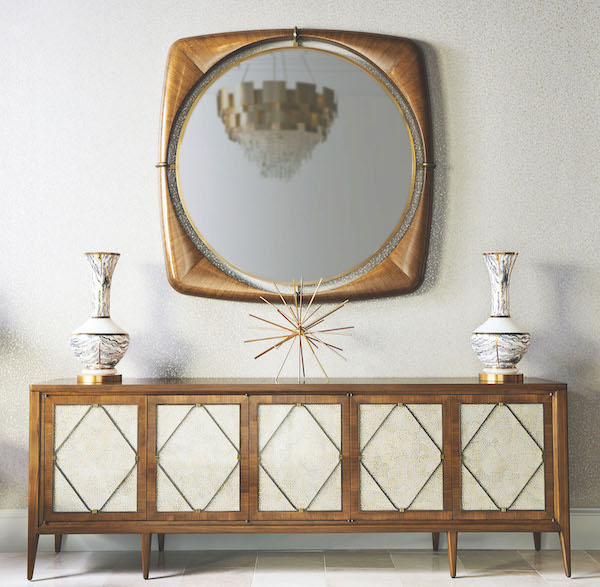
Superior material quality is another touchpoint when it comes to luxury pieces, whether that’s a thicker, clearer acrylic; a higher-grade stainless steel; or that American walnut veneer.
“Richness of the material and the finish, and the juxtaposition between the materials can command a more luxury experience,” says Brian Berk, President of Howard Elliott, which focuses on luxury home decor, accent furniture, mirrors, artwork and more. “Think of the things you look at in a diamond ring, for example, such as clarity and color. The crystal clear smaller diamond with no flaws is the luxury purchase.” For Howard Elliott, luxury can be found in the cladding on the door of cabinet hardware, the grade of marble on an accent table top, a wood species or the polish finish of a piece. For example, he suggests brushed high-grade stainless steel depicts luxury for many of his clients today, circling back to that more casual home appeal.
Materials that equate to luxury go beyond furniture too. Ann Gish pays attention to the details in its high-end textiles, from the collections it offers to the fabrics used and the quality craftsmanship of its pieces. For example, says Derrick Ricketts, National Sales Manager for the textiles company, “We dare you to find the dressmaker zippers that are added to pillow covers. This is just one of the extra details we include.” The company crafts much of its collection, too, from 100 percent silks, a material that is considered luxurious by nature. And where embroidery is employed, it’s hand-done by artisans. The company was founded with bedding but has expanded into pillows, boxspring covers and most recently, draperies, where it continues to employ its attention to the details for a luxury experience for its customers.
The High-End Luxury Home Decor Experience
Ultimately, it is the experience of a purchase that defines luxury for many consumers. While the details and quality are key to differentiating luxury from commodity products, the home furnishing retailer has the advantage of being able to provide a more customer-centric experience.

“The consumer has gotten so much more sophisticated about searching things online,” says Berk. “When you’re shopping at the higher end, you’re expecting the quality to be vetted for you already.” However, even when a piece meets quality standards, you can’t experience that piece online. And online returns can be complicated. For home furnishings retailers, especially those who can deliver quickly and pick up returns, it makes a difference and adds to the experience of the luxury purchase. “If there are too many layers in distribution, that can drive up the cost,” Berk adds, and it can also make the transaction more complicated, leaving room for error. “As a consumer, I’m willing to pay more for a retail experience where I get the support I need,” he adds.
At Johnathan Charles, especially during coronavirus where online has been the primary opportunity for customer connection, Graham notes, providing a tailored experience, particularly for customers who are selling to that luxury home decor consumer, has been critical even at that level. “When I was in retail, I would always go with a sales rep who knows my business.” With its customers, Jonathan Charles is maintaining that personal approach, using Zoom to connect and share buyer-directed tours of the products its customers are most interested in purchasing.
The Price of Luxury Home Decor
Luxury is a perception and while often the higher the price tag, the more an item is considered a luxury, home furnishings suppliers say price is no longer the only deciding factor. As consumers look for enhanced functionality and design from their homes — pieces that function as desks in this work-from-home environment or those furnishings that focus more on small space living, for example — price is not necessarily the primary deciding factor anymore.
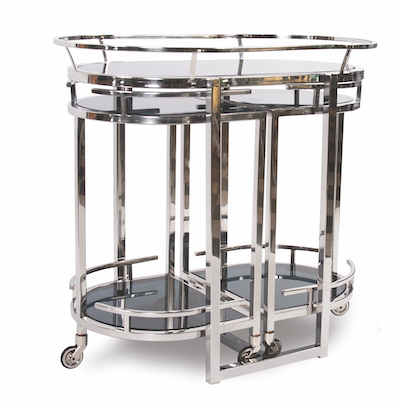
Multifunctionality, customizability and more are as critical to a luxury home decor experience as how much something costs. “When we’re working in product development, we’re looking at good, better, best. In the best category, we add as much multifunctionality as we can,” says Berk. “Better mirrors hang multiple ways,” for example.
For today’s consumer, and designers and retailers, customization can signal the ultimate luxury. Howard Elliott has committed partnership programs in place for this purpose, but it comes with the ability at the buyer’s end to have additional time and budget for those custom pieces.
Whether product finishes, details or attention to delivery, luxury for today’s consumer isn’t necessarily about the largest or most opulent and expensive piece they can find. It’s about finding those home furnishings that speak to their style and needs with that extra attention to the nuances that make a difference.
“The subtleties speak to you louder than all of the other things,” says Jonathan Charles’ Graham.

